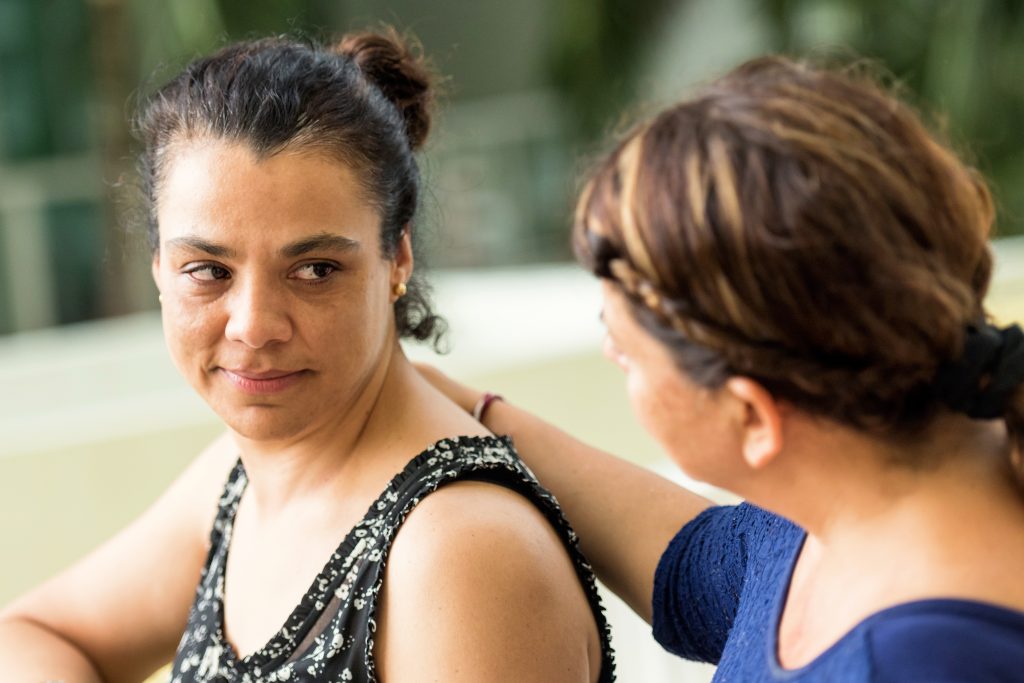
Our daughter is non-verbal and presents with autistic spectrum disorder, severe developmental delay, social communication disorder, co-ordination, and sensory integration difficulties. We have been using the same therapeutic approach to plan our visits for the fourteen years that she has been in two residential settings.
Understanding our daughter’s needs
We have regular communication with care staff and the multi-disciplinary team (MDT) e.g., Speech and Language, Occupational Therapist and Psychologist. We understand the programmes that the professionals have put in place, and we are prepared to do them e.g., sensory diet (1), intensive interaction.(2)
Our daughter is very sensory, so her sensory diet provides the key elements of our visits all wrapped up with a lot of intensive interaction. We think this is important as it maintains a consistent approach.
We give feedback to MDT and staff about our visit as they are interested to see how this works with our daughter and to listen to any ideas we have so they can try them too.
It’s a whole team effort
We invest time and energy in building up a good relationship with care staff and professionals. We do not see her every day, whereas they do, so they are also the experts.
Arriving early
By arriving 10 minutes before our visits gives us time to compose ourselves and have that all important conversation with care staff before the visit. How is she today? Did she sleep last night? etc.
Going with the flow
We let her dictate the journey. We’re flexible if she shows a preference for a certain activity and we follow her lead.
Our daughter enjoys deep pressure input, exploring different textures, music, movement-based activities, walking outdoors and cause and effect toys/books.
Our daughter sometimes likes to dance and sometimes likes to be quite sedentary. Sometimes she prefers to just engage with her cause-and-effect toys. We respect her choice. Every visit is different and part of a longer journey.
Being realistic
We think long term; we started with shorter visits and built up to longer visits over time. This is not a sprint, it’s a marathon.
Our visits at the previous setting could be only 30 minutes, now they can be over 3 hours long. However, depending on her mood and the amount of sleep she has had, we will shorten the visit if we feel she has had enough. This helps us finish on a good note as much as possible.
It is difficult to start to say goodbye when a visit is going well but we always try to finish on a positive note.
Thinking about what happens after our visit
We let staff know when we are planning to leave to ensure staff are available to take over and redirect our daughter to a preferred activity, helping a smoother transition, a key area of difficulty for her.
It doesn’t always work out
At this point, let’s be honest, it doesn’t always work out. It could be because she has not slept the night before or a myriad of other reasons. We have learnt not to beat ourselves up – there’s always the next visit.
We talk about the visit afterwards and we have learnt to be kind to each other.
And lastly, we have fun!
Footnotes
(1)A sensory diet is sensory based activities that are planned throughout the day with the aim of your child regulating him/herself and being calm and alert so they can engage in the activities of the day.
Hertfordshire Community NHS Trust.
(2)“Intensive Interaction is a practical approach to interacting with people with learning disabilities who do not find it easy communicating or being social. The approach helps the person with learning difficulties and their communication partner to relate better to each other and enjoy each other’s company more.”
MENCAP Fact sheet March 2004.
